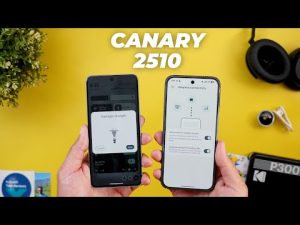
caption
This is my in-depth review of the Google Pixel 9 Pro XL. I believe Google has created an impressive phone, but unfortunately, they couldn’t perfect the camera experience as I had hoped, leaving a number of long-standing issues unresolved. I’ll discuss these in more detail later in the review, but for now, let’s dive into the full review of the Pixel 9 Pro XL, starting with the design and build quality.
Design and Build Quality:
If the Pixel 8 Pro is the father and the iPhone 15 Pro Max is the mother, the 9 Pro XL takes its father’s eyes and its mother’s body. The Pixel identity is still present, but the design leans more toward elegance. Even the color options this year feel more refined compared to last year’s flashy blue and mint green. The flat sides of the new design provide better grip when holding or picking up the phone from a desk, unlike the slippery curved edges of the Pixel 8 Pro.
However, the new design also makes the 9 Pro XL feel bulkier in your hand and pocket, especially with a case. The flat sides and sharper edges reduce some of the comfort we had with the Pixel 8 Pro. The side rails closely resemble the 15 Pro Max, with identical antenna line placements. The glossy finish of the 9 Pro XL stands out compared to the muted, matte look of the iPhone, but if you have sweaty hands, the iPhone’s matte finish offers more grip.
One area where the iPhone outshines the Pixel is the buttons. The Pixel’s buttons have a noisy click, unlike the premium feel of the iPhone’s buttons. There’s also a weird issue where the cutouts for the buttons are larger than the buttons themselves, making them feel loose and noisy when pressed. Even the buttons on the Pixel 8 Pro feel sturdier. The only upside to the 9 Pro XL’s buttons is their wider shape, making them more comfortable to press.
Moving on to the camera bar, I love the way it looks, and it’s more practical than previous Pixel models. There’s less metal around the cameras, so I no longer have to worry about micro-scratches like I did on the 7 Pro and 8 Pro. The matte finish on the rest of the camera bar also makes it more scratch-resistant over time, and it’s easier to clean compared to other phones like the iPhone 15 Pro Max and Galaxy S24 Ultra.
The back glass has a similar texture to the iPhone 15 Pro Max, though slightly softer, but not as soft as the Pixel 8 Pro. It uses Gorilla Glass Victus 2, which is a bit disappointing since the S24 Ultra uses Gorilla Glass Victus Armor, a more durable option with an anti-reflective surface that’s better for viewing under direct sunlight. I wish Google would stop using outdated technology in certain areas.
One of my biggest disappointments is the placement of the speaker and SIM tray. The loudspeaker is now on the left instead of the right, similar to Samsung’s approach. This means when I watch videos in landscape mode, I often cover the loudspeaker with my hand, forcing me to adjust how I hold the phone. Additionally, the SIM ejector tool fits into the microphone cutout, which is another Samsung-inspired misstep.
Another issue is the placement of the selfie camera, which is now lower and no longer perfectly aligned with the status bar icons, a detail that will likely irritate some users, including myself.
However, there are some positives. The proximity sensor has been correctly positioned this time, unlike the Pixel 8 Pro, where I could accidentally trigger the screen with my ear. The bezels around the display are also more uniform and slimmer than the 8 Pro, though not as slim as the iPhone 15 Pro Max.
In terms of size, the 9 Pro XL is the tallest of its competitors, but it shares a similar width with the iPhone 15 Pro Max and Pixel 8 Pro, with the S24 Ultra being the widest. The weight is comparable to the iPhone 15 Pro Max, about 10 grams lighter than the S24 Ultra, and 8 grams heavier than the 8 Pro.
Overall, if I were to rate the design based on aesthetics alone, I’d give it a 9 out of 10, but for practicality, it gets a 7 out of 10. Issues like speaker placement, SIM tray positioning, and outdated Gorilla Glass Victus 2 detract from the overall experience.
Display:
The display on the 9 Pro XL is outstanding. The smoothness of the glass is incredible, and my finger glides over the screen effortlessly. The 6.8-inch panel is slightly larger than the Pixel 8 Pro’s 6.7-inch screen, thanks to the slimmer bezels, providing a slightly better screen-to-body ratio. The resolution remains the same as last year, lagging behind the S24 Ultra but better than the iPhone 15 Pro Max, and it features the familiar 120Hz refresh rate.
Where the 9 Pro XL really stands out is in brightness, boasting a peak of 3,000 nits and 2,000 nits for HDR content, surpassing its competitors. Under direct sunlight, the 9 Pro XL remains bright and easy to read.
The color reproduction is also great, with warm white balance similar to the iPhone 15 Pro Max. The S24 Ultra has a cooler tone, offering the most accurate whites. In terms of PWM dimming, which affects how fast the display flickers, the 9 Pro XL improves over the Pixel 8 Pro, though the S24 Ultra still leads.
A new feature called Adaptive Touch enhances touch sensitivity when using a screen protector, adapting to the environment and activities. Based on my testing, it works well, even with wet hands.
Performance:
Despite Google’s marketing focus on AI and ambient computing, the 9 Pro XL proved itself in heavy workloads. In my testing, it managed 30 minutes of gaming while playing a 2160p video, attending a Microsoft Teams meeting, and navigating on Google Maps, all without overheating—something the S24 Ultra couldn’t do without a thermal warning.
However, in everyday usage, the performance difference between the 9 Pro XL and its competitors is negligible. App launching speed was on par with the S24 Ultra, and in some cases, the 9 Pro XL even outpaced the iPhone 15 Pro Max.
Battery Life and Charging:
The 9 Pro XL offers 7 hours and 45 minutes of screen time on mobile data, enough to last through the day. In real-world use, I managed 20 hours of usage, from 8 a.m. to 4:38 a.m., with a combination of Wi-Fi and mobile data.
The charging speed is adequate but not groundbreaking. The 37W wired charging is faster than last year’s model, and wireless charging remains at 12W with Qi chargers and 23W with the Pixel Stand.
Speakers:
The speakers are improved over the Pixel 8 Pro, but still fall short of the iPhone 15 Pro Max in terms of volume. The sound quality is good, though initially distorted, but improved over time.
Camera:
Now, let’s talk about the camera. While there are noticeable improvements over the Pixel 8 Pro, there are still numerous issues, particularly with subject isolation. For years, Google hasn’t been able to fix how the camera blurs subjects in portrait mode, often cutting off glasses or hair, whether it’s day or night.
At 1.5x zoom, the 9 Pro XL has a better overall look than the 8 Pro, but it’s still behind the iPhone 15 Pro Max and S24 Ultra in terms of natural blur and subject isolation.
That concludes the first part of my in-depth review of the Google Pixel 9 Pro XL. Despite its shortcomings in camera performance and some design flaws, it remains a powerful and well-designed phone. Let me know your thoughts in the comments!


